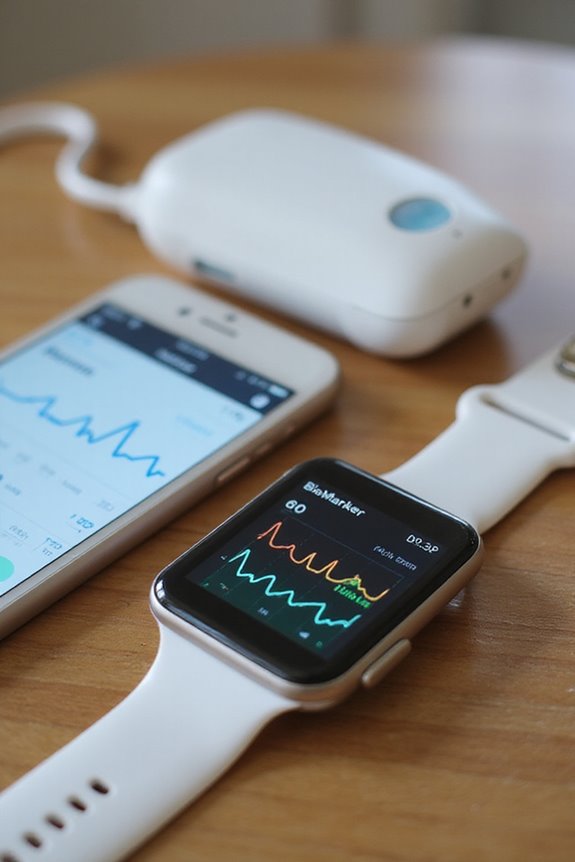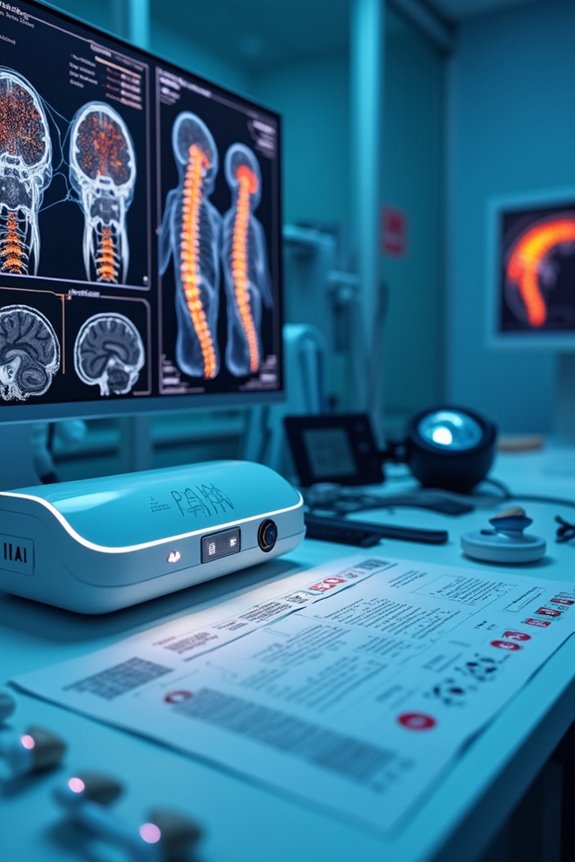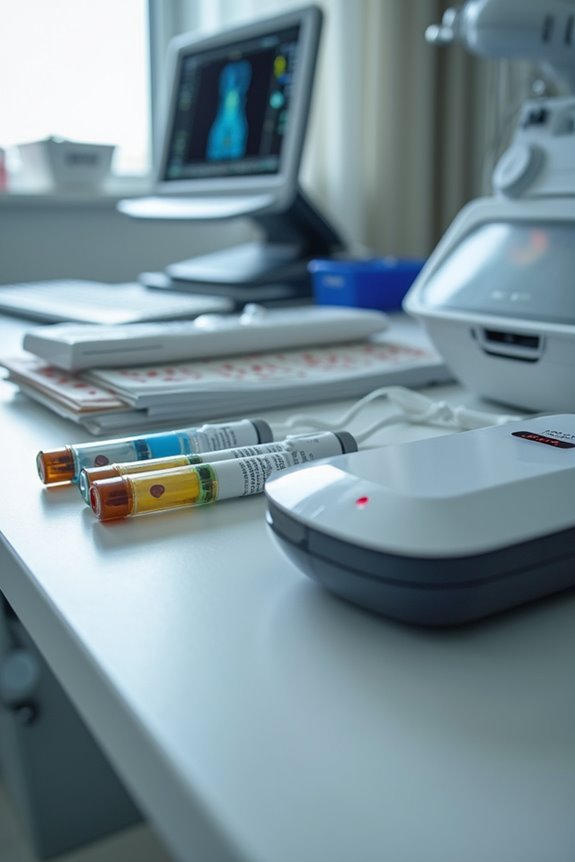Digital biomarkers can predict pain progression by integrating various data types, including physiological and cognitive markers. Studies show machine learning models have an area under the curve (AUC) ranging from 0.62 to 0.87 for predicting pain-related conditions. Composite blood-based biomarkers can forecast pain onset with an AUC of 0.59 to 0.72. Continuous data collection from wearable technologies allows for objective tracking of patient progress, indicating vast potential in chronic pain management. More insights on this topic are available.
Key Takeaways
- Machine learning models can predict pain-related conditions with high accuracy, aiding in pain progression forecasting.
- Brain connectivity patterns have been linked to the transition from acute to chronic pain, indicating predictive potential.
- Composite blood-based biomarkers can forecast pain onset nearly nine years in advance, highlighting long-term predictive capabilities.
- Digital biomarkers from wearable technology capture real-time data, enabling ongoing assessment of pain progression.
- Neuroimaging studies reveal brain abnormalities associated with chronic pain, which can serve as indicators of pain progression.
Understanding Digital Biomarkers and Their Role in Pain Management
Digital biomarkers represent a transformative approach in pain management, as they facilitate the integration of technology into clinical practices. These biomarkers enhance patient engagement by providing personalized therapy options based on detailed, patient-specific information.
Key Benefits:
- Personalized Therapy: Tailored therapeutic strategies improve patient outcomes.
- Enhanced Accuracy: Multimodal digital biomarkers improve diagnostic and prognostic accuracy in chronic pain.
- Reduced Trial-and-Error: Clinical decision support systems minimize ineffective treatments.
Data privacy remains a significant consideration, ensuring that patient information is securely managed. By bridging subjective pain reports with objective measurements, digital biomarkers empower clinicians to assess and manage pain effectively, fostering a collaborative patient-clinician relationship.
Types of Digital Biomarkers Used to Monitor Pain Progression
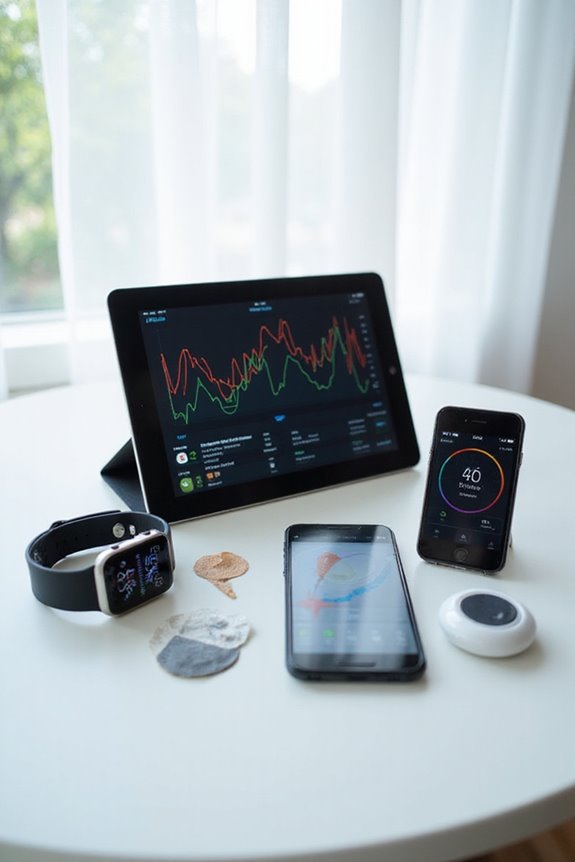
Monitoring pain progression requires the utilization of various types of digital biomarkers, each providing unique insights into the patient’s experience. These include:
- Physiological Markers: Measure autonomic nervous system activity, heart rate variability, and blood pressure fluctuations, indicating pain-related stress responses and inflammatory processes.
- Cognitive Assessments: Utilize smartphone-based tests and app-based questionnaires to evaluate cognitive load, pain catastrophizing, and sleep patterns, reflecting the psychological impact of pain.
- Wearable Technology: Employ sensors for activity monitoring, capturing movement data, gait analysis, and physical activity frequency to assess mobility limitations.
- Neurophysiological Signals: Record EEG and other signals to detect dysfunctional pain processing in the central nervous system.
- Molecular Indicators: Emerging biosensors may measure biochemical changes associated with pain, advancing digital health applications in pain management.
Evidence Supporting Digital Biomarkers in Predicting Pain Outcomes

The growing body of evidence indicates that biomarker analysis plays an essential role in predicting pain outcomes. Digital health advancements have enabled the integration of various biomarker types, enhancing pain assessment accuracy. Key findings include:
- Pain biomarkers identify altered biological pathways linked to chronic postsurgical pain.
- Neuroimaging reveals structural and functional brain abnormalities associated with pain chronification.
- Machine learning applied to large datasets effectively predicts pain-related conditions (AUC 0.62-0.87).
- Composite blood-based biomarkers can forecast pain onset nearly nine years in advance (AUC 0.59-0.72).
- Brain connectivity patterns predict acute to chronic pain progression.
These insights underline the potential for digital biomarkers to improve pain management and treatment personalization, reinforcing the biopsychosocial approach to chronic pain.
Applications of Digital Biomarkers in Chronic Pain Rehabilitation

Advancements in technology have facilitated the application of digital biomarkers in chronic pain rehabilitation, enhancing the precision of treatment strategies.
Key Applications:
- Wearable technology integration captures real-time movement patterns, enabling the assessment of motor impairments and rehabilitation progress.
- Virtual reality (VR) interventions provide repetitive exposure to movement, effectively addressing fear of movement in patients with chronic low back pain.
- Continuous data collection from wearables and VR devices yields objective digital biomarkers, facilitating personalized feedback.
- Quantitative metrics, such as range of motion and flexibility, help track patient progress over time.
- These digital intervention strategies support scalable pain management, extending rehabilitation beyond traditional clinical settings and enhancing patient engagement.
Future Directions for Research and Clinical Implementation
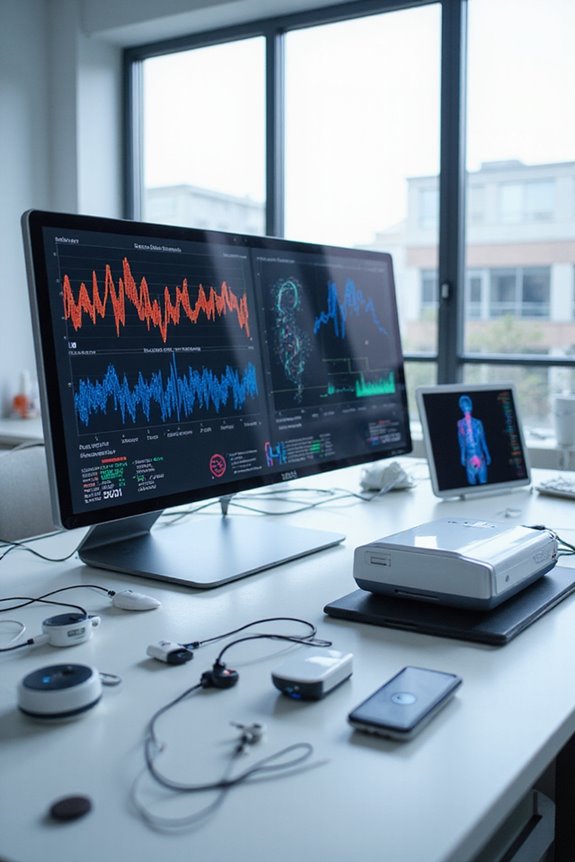
As research progresses in the field of digital biomarkers for pain management, significant emphasis is placed on integrating multimodal biomarkers and psychosocial factors. Future investigations should prioritize the following:
- Composite Biomarker Signatures: Combining neuroimaging, molecular, and psychosocial data enhances predictive accuracy.
- Machine Learning Applications: Advanced algorithms can elucidate complex interactions between biological and psychosocial determinants.
- Data Standardization: Establishing rigorous protocols is crucial for the clinical translation of digital biomarkers.
- Ethical Considerations: Addressing data privacy and patient consent is critical in deploying these technologies.
- Multicenter Studies: Large-scale research will guarantee generalizability across diverse populations.
These directions highlight the need for interdisciplinary collaboration to effectively bridge laboratory research and clinical application, ultimately advancing personalized pain management strategies.
Frequently Asked Questions
How Do Digital Biomarkers Differ From Traditional Biomarkers in Pain Assessment?
Digital biomarkers differ from traditional biomarkers in pain assessment by offering objective measurements and real-time feedback. They capture continuous data through wearable devices, enhancing understanding of pain dynamics and promoting a sense of belonging in patient care.
What Specific Wearable Devices Are Commonly Used for Pain Monitoring?
In the domain of pain monitoring, smartwatches boast extraordinary features for pain tracking, seamlessly measuring heart rate and electrodermal activity. These devices foster a sense of community, empowering users to manage their pain effectively and confidently.
Can Digital Biomarkers Predict Pain for All Types of Chronic Conditions?
Digital health initiatives show promise in predicting chronic pain across various conditions, yet challenges remain. Factors like individual variability and the need for integrated biological and psychosocial approaches complicate universal predictive capabilities of digital biomarkers in this field.
How Can Patients Ensure Their Data Privacy With Digital Biomarker Technologies?
Patients can guarantee data privacy with digital biomarker technologies by actively engaging in informed consent processes, prioritizing data security measures, and utilizing platforms that offer control over data sharing and transparency regarding how their information is used.
Are There Any Risks Associated With Using Digital Biomarkers in Pain Management?
Utilizing digital biomarkers in pain management carries risks related to data security and patient consent. Continuous monitoring may lead to privacy concerns, and inadequate ethical standards can result in misuse or discrimination against vulnerable populations.

